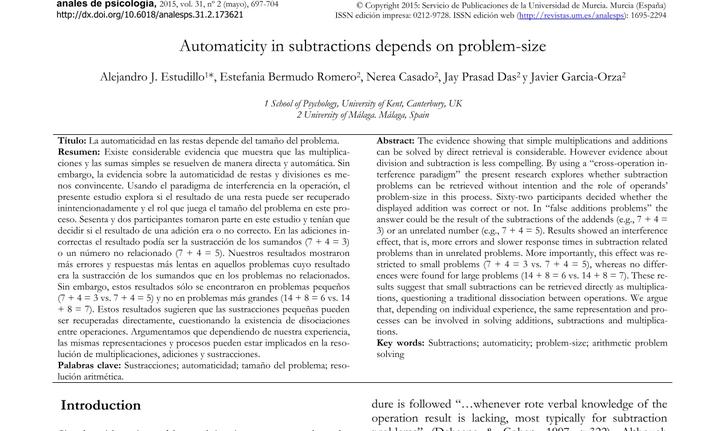
Abstract
The evidence showing that simple multiplications and additions can be solved by direct retrieval is considerable. However, evidence about division and subtraction is less compelling. By using a cross-operation interference paradigm, the present research explores whether subtraction problems can be retrieved without intention and the role of operands’ problem-size in this process. Sixty-two participants decided whether the displayed addition was correct or not. In false additions problems, the answer could be the result of the subtractions of the addends (e.g., 7 + 4 = 3) or an unrelated number (e.g., 7 + 4 = 5). Results showed an interference effect, that is, more errors and slower response times in subtraction related problems than in unrelated problems. More importantly, this effect was restricted to small problems (7 + 4 = 3 vs. 7 + 4 = 5), whereas no differences were found for large problems (14 + 8 = 6 vs. 14 + 8 = 7). These results suggest that small subtractions can be retrieved directly like multiplications, questioning a traditional dissociation between operations. We argue that, depending on individual experience, the same representation and processes can be involved in solving additions, subtractions and multiplications.